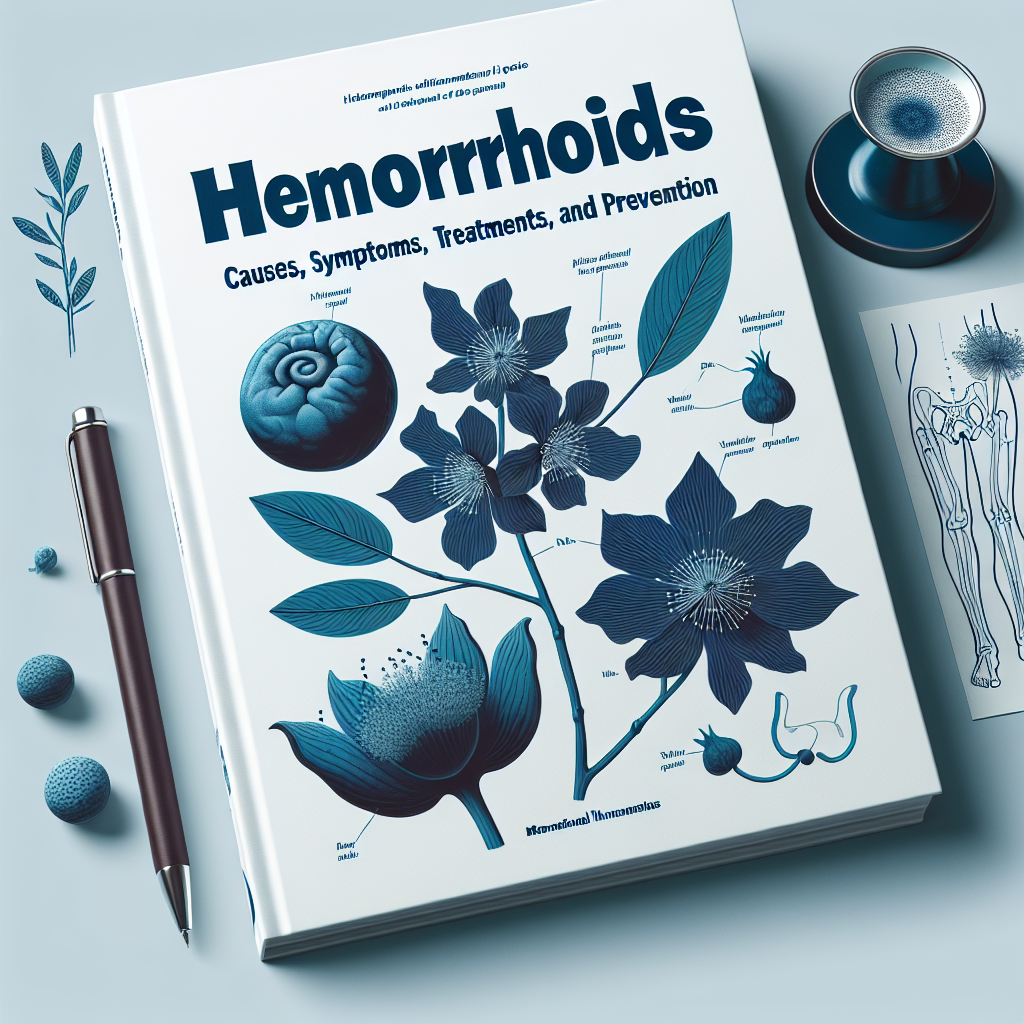What are Hemorrhoids?
Hemorrhoids are vascular cushions located in the anal canal. They contain blood vessels, connective tissue, and muscle fibers. They play a key role in fine fecal continence, helping to seal the anus. Pathological hemorrhoids refers to when these cushions become swollen, inflamed, or displaced. This condition can occur internally, inside the rectum, or externally, under the skin around the anus.
Causes and Risk Factors
Several factors contribute to the development of hemorrhoids. Increased pressure in the rectal and anal veins plays a central role. Here are the main causes and risk factors:
- Excessive straining during defecation: Significant straining, often due to chronic constipation, increases pressure.
- Chronic constipation or diarrhea: Both conditions can irritate anal tissues and increase pressure.
- Pregnancy and childbirth: Pressure from a growing uterus and straining during childbirth can cause hemorrhoids.
- Aging: Supporting tissues for anal veins can weaken with age.
- Prolonged sitting: A static sitting position for long periods can contribute to their appearance.
- Low-fiber diet: This type of diet often contributes to constipation.
- Obesity: Excess weight puts additional pressure on the anal area.
Symptoms and Signs
Hemorrhoid symptoms vary by type and severity. Internal hemorrhoids often cause painless bleeding. Bright red blood is usually noticed on toilet paper or in the bowl after defecation. Sometimes, internal hemorrhoids prolapse, meaning they protrude from the anus. They may then retract spontaneously or require manual reinsertion. External hemorrhoids cause more pain. They can be accompanied by itching, a burning sensation, or swelling around the anus. In cases of thrombosis (blood clot formation), the pain becomes intense, acute, and sudden. They can also make it difficult to clean the anal area after a bowel movement, irritating the surrounding skin.
Diagnosis: How are Hemorrhoids Detected?
The diagnosis of hemorrhoids typically relies on a physical examination and symptom assessment. The doctor begins with a detailed interview about bowel habits, pain, and bleeding. Next, they perform a visual examination of the anal region to identify external hemorrhoids. A digital rectal exam allows for palpation of internal hemorrhoids and assessment of anal sphincter tone. If necessary, an anoscopy or rectoscopy allows for a more in-depth examination of the anal canal and rectum. These examinations help rule out other conditions that may present similar symptoms, such as anal fissures or polyps.
Treatments and Management
Hemorrhoid treatment depends on their severity. Often, conservative measures are sufficient:
- Lifestyle modifications: Increase fiber intake to soften stools and prevent constipation. Drinking enough water also helps. Engage in regular physical activity.
- Local hygiene: Gently clean the anal area after defecation with warm water instead of dry toilet paper.
- Topical medications: Creams or suppositories containing local anesthetics, corticosteroids, or skin protectants to relieve pain, itching, and inflammation.
- In-clinic procedures: For internal hemorrhoids that bleed or prolapse, procedures are possible. Rubber band ligation is the most common; small elastic bands are placed at the base of the hemorrhoid to cut off blood supply, causing it to necrose. Sclerotherapy involves injecting a solution to make it shrink.
- Surgery: For severe cases or non-response to other treatments, a hemorrhoidectomy (surgical removal of hemorrhoids) may be recommended.
Recent Scientific Advances
Research on proctological diseases remains dynamic. The first half of 2025 has seen promising developments in the treatment and understanding of hemorrhoids. There is growing interest in minimally invasive approaches. Recent studies focus on optimizing Transanal Hemorrhoidal Dearterialization (THD) techniques, a procedure that targets the arteries supplying hemorrhoids without excising them. Research aims to improve success rates and significantly reduce post-operative pain. Additionally, new studies are evaluating the effectiveness of combined therapies, associating dietary modifications with innovative pharmacological agents. These advances promise even more targeted and less invasive future management for patients.
Prevention: Is it Possible to Reduce the Risk of Hemorrhoids?
One can significantly reduce the risk of hemorrhoids by adopting healthy lifestyle habits. A diet rich in fiber (fruits, vegetables, whole grains) is essential for maintaining soft and regular stools, which helps avoid excessive straining during bowel movements. Drinking plenty of water also helps soften stools. It is recommended to avoid prolonged sitting or standing. Regular physical activity promotes intestinal transit and reduces venous pressure. Listening to your body and having a bowel movement when the urge arises prevents constipation. By adopting these preventive measures, the risk of developing hemorrhoids is considerably reduced.
Living with Hemorrhoids
Living with hemorrhoids can be uncomfortable, but symptoms are effectively managed with the right strategies. Proactive constipation management remains paramount. Incorporating dietary fiber and sufficient hydration are daily habits to prioritize. Using unscented wet wipes after defecation helps prevent irritation. Warm sitz baths can relieve pain and inflammation. It is important to avoid sitting on the toilet for a prolonged period. If symptoms persist or worsen despite home measures, consulting a healthcare professional becomes necessary. An accurate diagnosis allows for an adapted treatment plan. With appropriate management, the impact of hemorrhoids on daily life can be minimized.
Frequently Asked Questions (FAQ)
Are hemorrhoids common?
Yes, hemorrhoids are very common. It is estimated that they affect a large part of the adult population at some point in their lives, especially after 30 years of age.
When should you see a doctor for hemorrhoids?
You should see a doctor if you observe rectal bleeding, intense pain, if symptoms do not improve with home treatments, or in case of persistent prolapse. A healthcare professional can assess the situation and rule out other conditions.
Can hemorrhoids be completely cured?
Yes, in many cases, hemorrhoids can be effectively managed, and symptoms disappear with lifestyle changes or specific treatments. Surgical approaches offer a definitive solution for persistent or severe cases.
Is there a link between diet and hemorrhoids?
Absolutely. A diet low in fiber and water is a major cause of constipation, which is a significant risk factor for hemorrhoids. A balanced and fiber-rich diet helps prevent their appearance.
Can hemorrhoids return after treatment?
Even after successful treatment, hemorrhoids can reappear if risk factors (such as constipation or excessive straining) persist. Maintaining a healthy lifestyle is crucial to prevent recurrence.
Additional resources
- To extend your knowledge, more articles are available here.
Confused by your blood test results?
Get instant clarity. AI DiagMe interprets your blood test results online in minutes. Our secure platform translates complex medical data into an easy-to-understand report. Take control of your health today. Visit aidiagme.com to get your personalized insights now.

